A Change in the Air
Everything depends on the weather
Dear friends,
Every morning, I wake up sleepy-eyed and stiff, then gently make my way outside. It has become a morning practice to begin the day outdoors, tending to the dogs, chickens, and my small garden. The dogs, also waking from their night’s slumber, stretch into downward dog before running around the yard. I take these moments to attune myself to nature.
Fall feels like an especially precious time for observing change. If you make the art of observation a daily ritual — especially in a place as nature-abundant as Kamikatsu — every single day reveals a subtle shift.
When I first arrived in Kamikatsu two years ago, I heard local people say things like, “The air feels different—a heavy rain is coming.” They would notice the changing colors of leaves, the migratory patterns of insects and animals, and combine this deep natural wisdom with quiet foretellings. They saw and sensed things I didn’t yet (and still don’t fully) understand.
In the final days of summer, toward the end of August, I hung my umeboshi (pickled plums) out in the sun for the final stage of drying. I laid the brightly colored umeboshi onto a bamboo colander, letting them bask in the sun for several days.
White dew and shurin
Spending a much more considerable amount of time outside since moving to the countryside, I’m conscious that nature and its ecosystems are in constant motion— there is never stillness if you pay attention to its fluctuations and rhythms.
That’s probably why I’m drawn to the microseasonal calendar, an ancient Japanese calendar with 72 microseasons. The calendar takes Japan’s four broad sweeping seasons (summer, autumn, winter, and spring) and breaks them down into much smaller windows of time.
We have entered the microseason of White Dew, characterized by the droplets that form on the grass and leaves in the early morning. Temperatures are gradually falling, and vapors in the air often condense into dew overnight. I can feel the small droplets on my feet when I step outside in my sandals.
I’ve also noticed that bursts of rain and stormy weather serve as markers of seasonal transition. Natanezuyu is a long spell of rain in early spring that comes before the flowering cherry blossoms, while tsuyu, the main rainy season, precedes and gradually shifts into the beginning of summer. Autumn is no exception, with shūrin marking the transition into the new season.
Shurin coincides with typhoon season, which lasts from mid-September to early October. Kamikatsu is expecting a typhoon to pass through in the next few days. To prepare, I’ve boarded up my house with wooden planks traditionally used to protect old homes from extreme weather. I’ve stocked up on water and food, and I’ve repacked my emergency kit, which includes essentials like a portable torch and radio, a first aid kit, and a gas cookstove. I’m taking extra precautions, and I hope everyone in Japan stays safe in the storm.
Sister in town!
A very, very exciting personal update is that my sister, Mina, has moved to Kamikatsu! I have one sister, two years younger than me, and she has decided to take a year off from work to rest and spend time in Japan.
My sister and I grew up attached at the hip, always wearing matching outfits in different colours. A “best friend and sister” relationship is something few people get to experience, but if you know, you know — it’s a rare and precious gift to share such a deep bond.
She moved to Kamikatsu exactly a month ago, and this tiny village will be her home for the next year of exploration, rest, and growth. Welcome to Kamikatsu, Mina!
My sister shares stories of living in Kamikatsu in her newsletter. Living with her (again) and reading her writing is a poignant reminder that two people, sharing the same experience, can have such different perspectives. Her insight is hilarious and beautiful.
Mid-Autumn Celebration
Two weekends ago, I celebrated the autumnal equinox with a few friends in Kamikatsu. The Mid-Autumn Festival is widely celebrated across various Asian countries. Growing up, I don’t remember following Japanese traditions, but my father (who is from Hong Kong) would bring home mooncakes for us to share. A single mooncake was large enough for our whole family—cut neatly into four quadrants. One lucky person would get the slice with a salted egg yolk inside, symbolizing the moon.
Celebrating Otsukimi, the Japanese version of the Mid-Autumn Festival, was a new experience for me. Otsukimi (お月見) translates literally to “moon viewing.” Our friends and I gathered on a small picnic blanket, basking in the moonlight and enjoying traditional foods like dango, a type of rice cake. It felt magical to be outside in the darkness, far from streetlights, with only a small lamp and the moon herself to guide us through the evening.
Other Updates
A sad update: several weeks ago my rooster died (of natural causes). It was quite hot weather towards the tail end of summer, and it looked like it might have been too much for him. He was unharmed and didn’t seem in any pain when I found him lying down. I haven’t had the best relationship with the rooster (who attacked me), but it was wonderful to observe him and I’m grateful he took care of the hens who continue to lay eggs for me each morning.
Lastly, I think some of you came across this newsletter through an article, from the Japan Times, written by Patrick St Michel, and if you are here because of that piece—thank you for your beautiful curiosity. I am so grateful for you.
Have a wonderful week ahead, and attune yourself to the small changes in nature. Kana



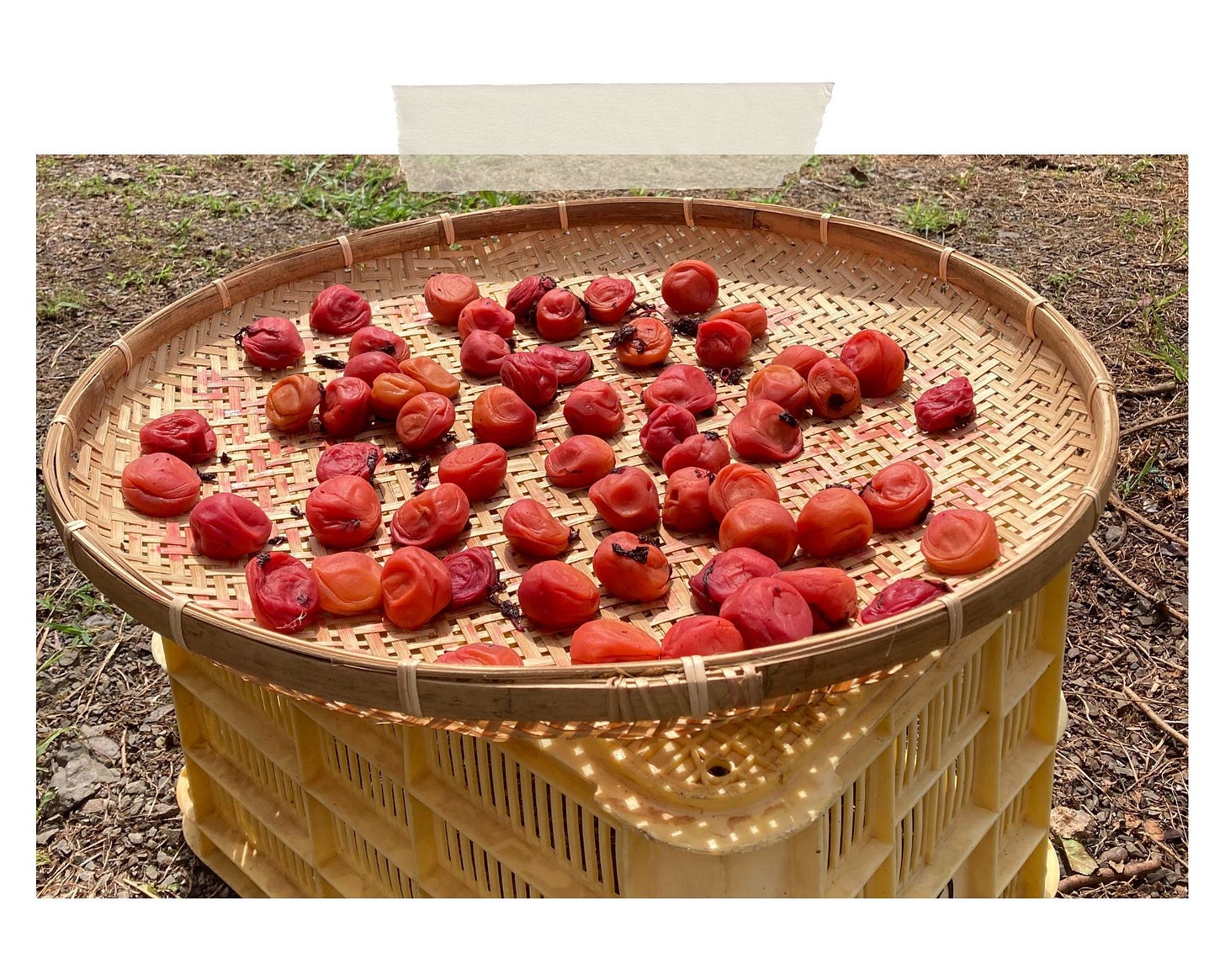
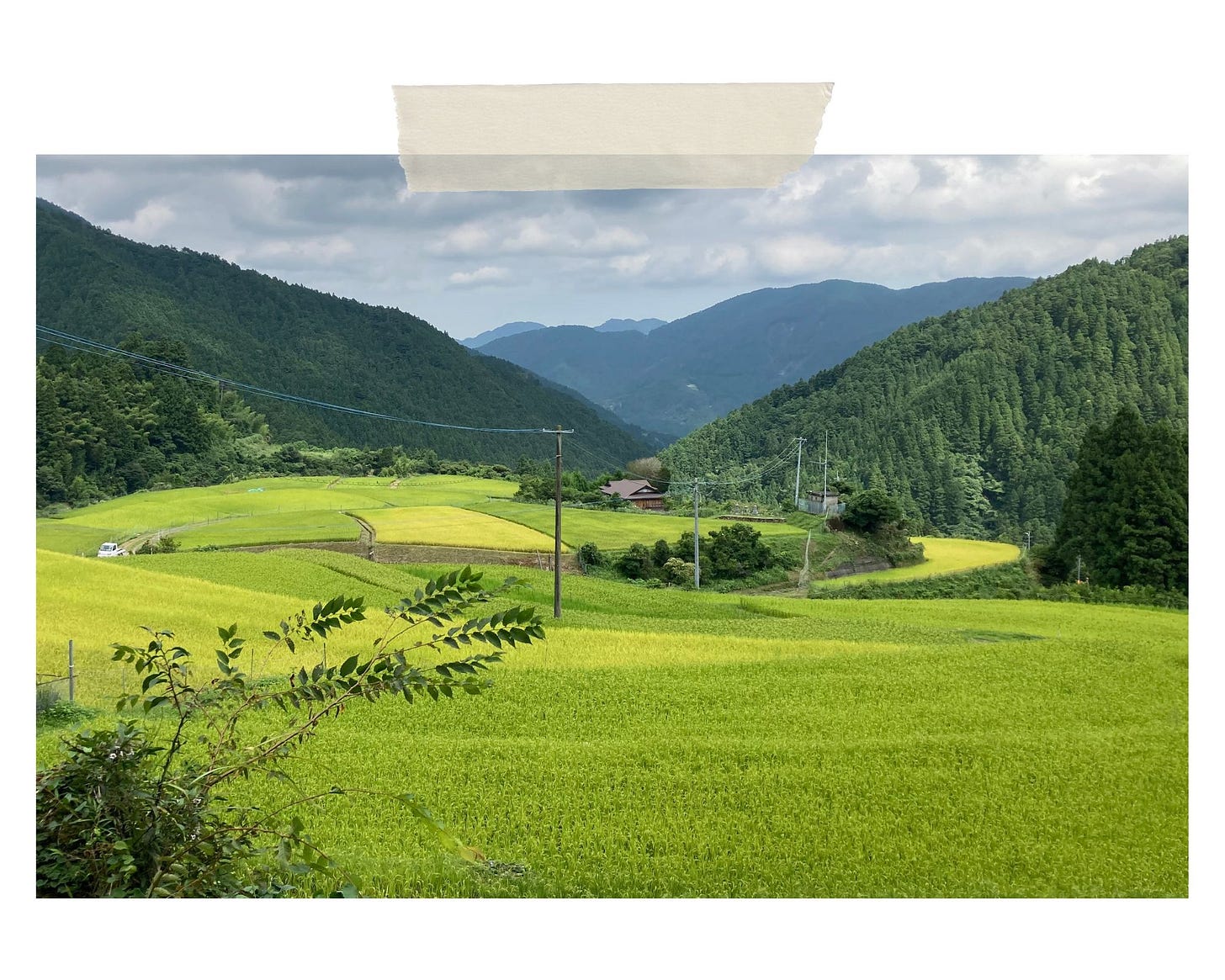
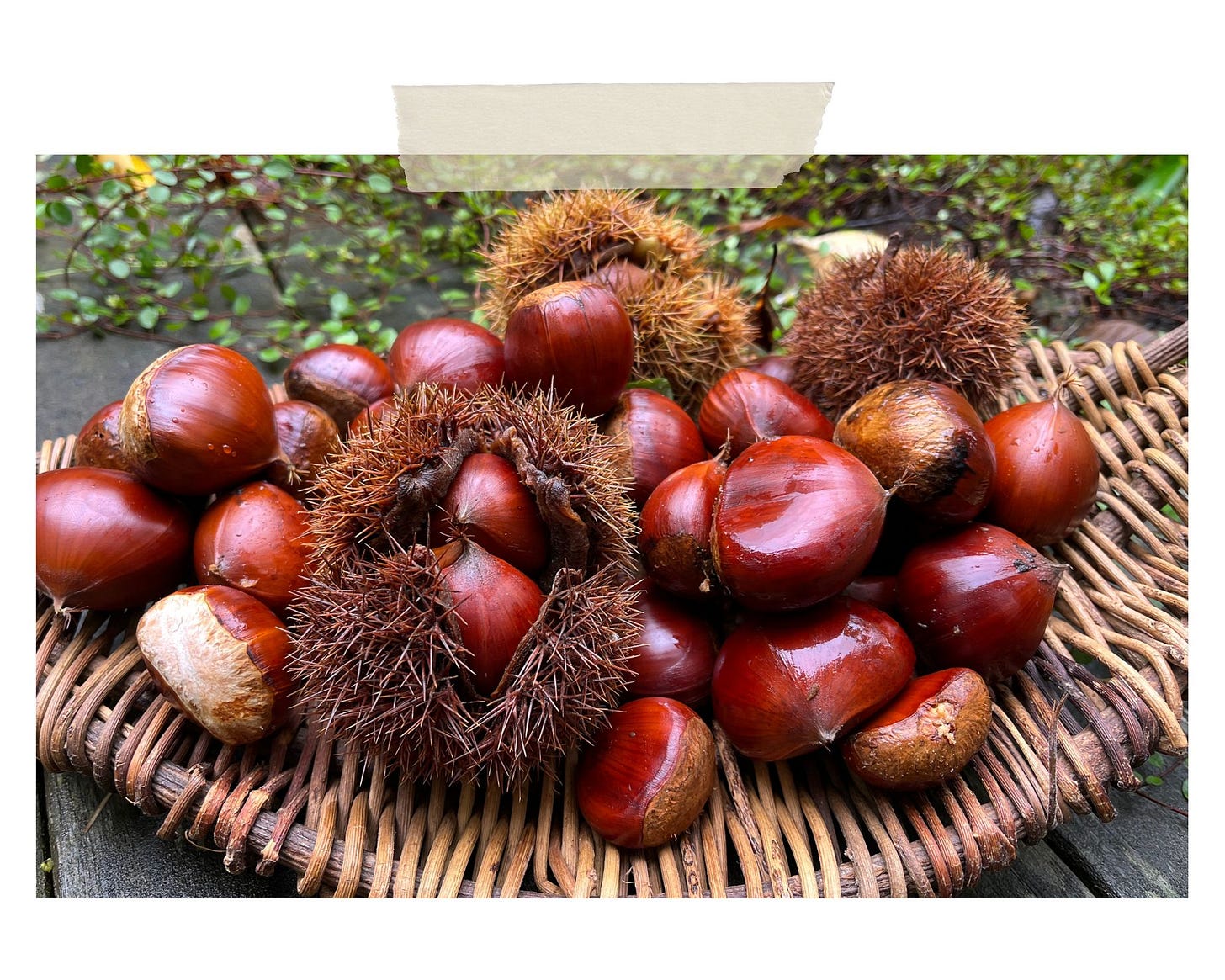
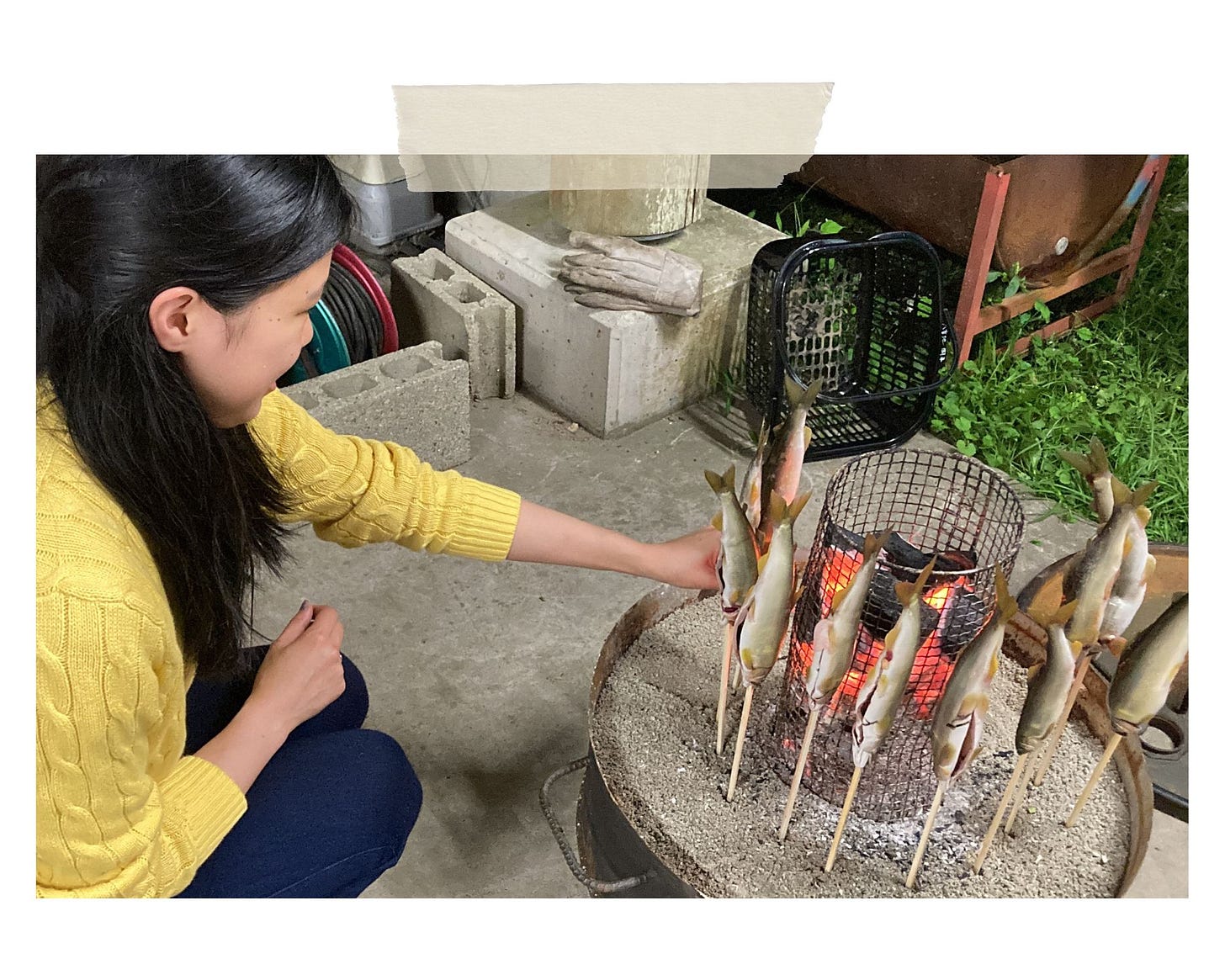
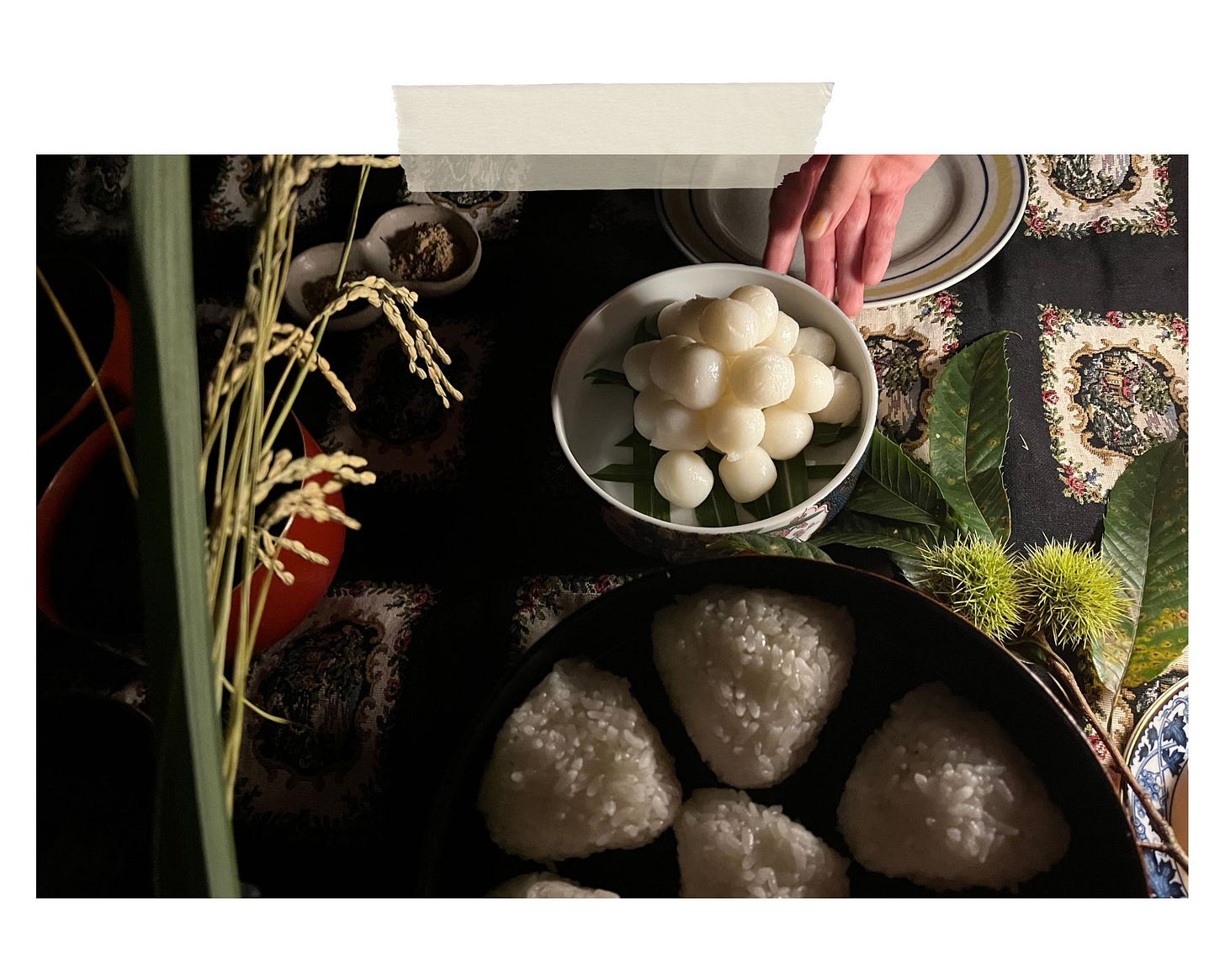

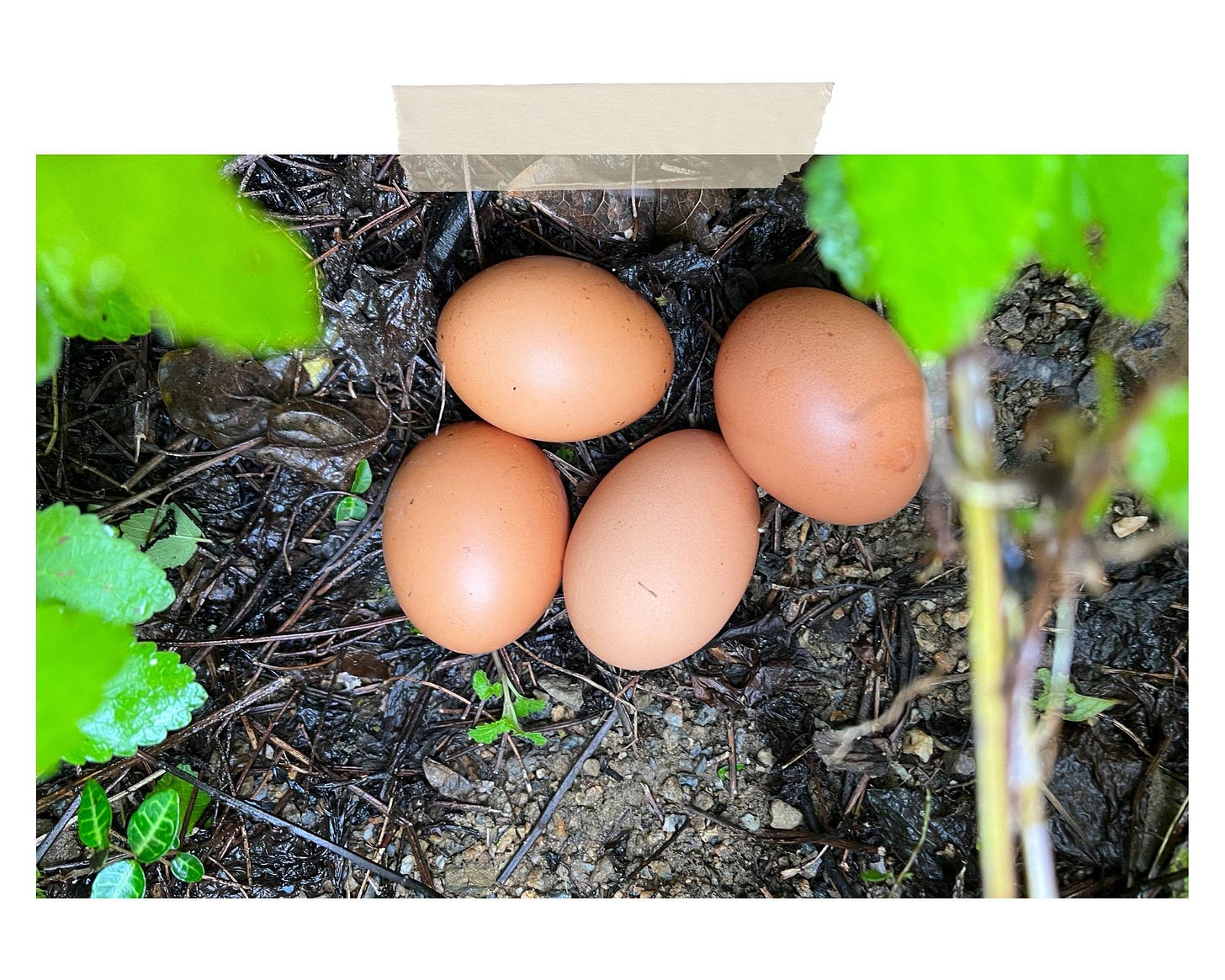
Hi Kana
I'm new here (found you through Elle Griffin's recommendations) and this is the first of your newsletters I've read and I'm already in love! I'm fascinated with the idea of Kamikatsu being a zero-waste village... I honestly believe that this is the only way forward for humanity and fervently hope that this model becomes more commonplace rather than a curious novelty. I'm sure that you must've written specifically about Kamikatsu and how it operates previously - could you direct me to the correct post?
I live in a very beautiful country with abundant nature, South Africa, but I'm in our largest and most "city" city, Johannesburg. Having said that, I do still have a lot of nature around me even in the city - Joburg is actually classified as the world's largest man-made urban forest, with over 10 million tress! For this I am very grateful but I often dream of a life more connected to the rythms of nature and away from the hustle and bustle, but somehow feel like I'm 'stuck' here for now (various reasons, including my job and my son needing to be in the same area as his father from whom I'm divorced.)
Lol not sure why I just shared so much in what was meant to be a simple comment of appreciation - I think the nature of your newsletter reminds me of pre-internet days when as a child I had a penpal in Russia. I used to wait so eagerly for her letters to arrive by post, to be able to read of a life so different from my own. It's this aspect that I am truly enjoying about Substack, whereas with other social media it's an empty promise of the deeper connection we humans crave.
I hope you're having a beautiful day!
How exciting to have your sister join you for a year! Also, I love hearing about the subtle shifts in seasons - those are my favorite time of year :)